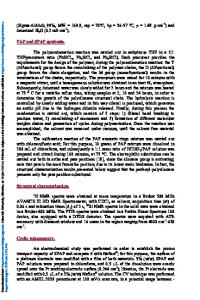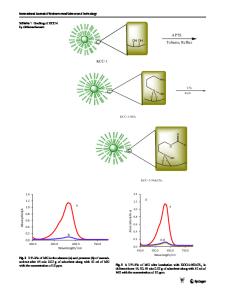Synthesis and characterization of functionalized nanosilica for cementitious composites: review
- PDF / 458,247 Bytes
- 10 Pages / 547.087 x 737.008 pts Page_size
- 16 Downloads / 523 Views
REVIEW
Synthesis and characterization of functionalized nanosilica for cementitious composites: review Gabriel L. O. Martins & Yuri S. B. Fraga & Julliana S. Vasconcellos & João H. da S. Rêgo
Received: 25 August 2020 / Accepted: 21 October 2020 # Springer Nature B.V. 2020
Abstract In recent years, due to the increase of nanotechnology and the demand for innovations in cementitious materials, there has been a significant interest in research in the application of nanosilica (NS) as supplementary nano cementitious material (SNCM). The incorporation of NS in cementitious materials aims to improve its performance in specific applications, such as for high strength and durability in the concretes. Recent developments in the synthesis of the monodisperse and small size distribution of nanoparticles by functionalization methods provide a significant boost to the development of nanosilica composites with functional group grafts, called functionalized nanosilica (FNS). This review article intends to standardize the bibliographic review of FNS synthesis methods and the ways to characterize them. Keywords Nanosilica (NS) . Supplementary nanocementitious material (SNCM) . Functionalization . Functionalized nanosilica (FNS) . Bibliographic survey
Introduction Studies show that nanosilica (NS) applied as supplemental nano cementitious material (NMCS) improves G. L. O. Martins (*) : Y. S. B. Fraga : J. S. Vasconcellos : J. H. da S. Rêgo Universidade de Brasília - UnB – Programa de Pós-graduação em Estruturas e Construção Civil - PECC, Brasília, DF CEP: 70910-900, Brazil e-mail: [email protected]
their quality, mostly in terms of their mechanical properties (Najigivi et al. 2013; Rashad 2014; Reches 2018; Varghese et al. 2019). The combination of NS’s high specific surface with its more efficient pozzolanic activity generates a denser nano/microstructure that justifies the increased strength and improved durability of NS cement products. However, the existing experimental evidence on the effect of NS particles may be inconclusive. Part of these divergences can be credited to three properties of the NS: (1) The nanosilica particles agglomerate easily due to their high surface energy. NS agglomerations in cementitious matrices generally result in negative effects on the rheological behavior, workability, and final hardened properties of cementitious composites; (2) Autogenous shrinkage in cementitious composites with nanosilica is another challenge that has been widely studied in the scientific environment. Autogenous deformation is greater in high-performance concretes (HPC) with nanosilica due to the rapid development of a fine and porous arrangement within the cement paste. Thus, it generates higher capillary stress. As the structures have one or more forms of restriction, the risk of cracking in the HPC is greater, especially at an early age, which may compromise its strength, durability, and esthetics (Kong et al. 2013; Manzano 2016); (3) Compatibility of the NS surface with superplasticizer and similar (Gu et
Data Loading...











